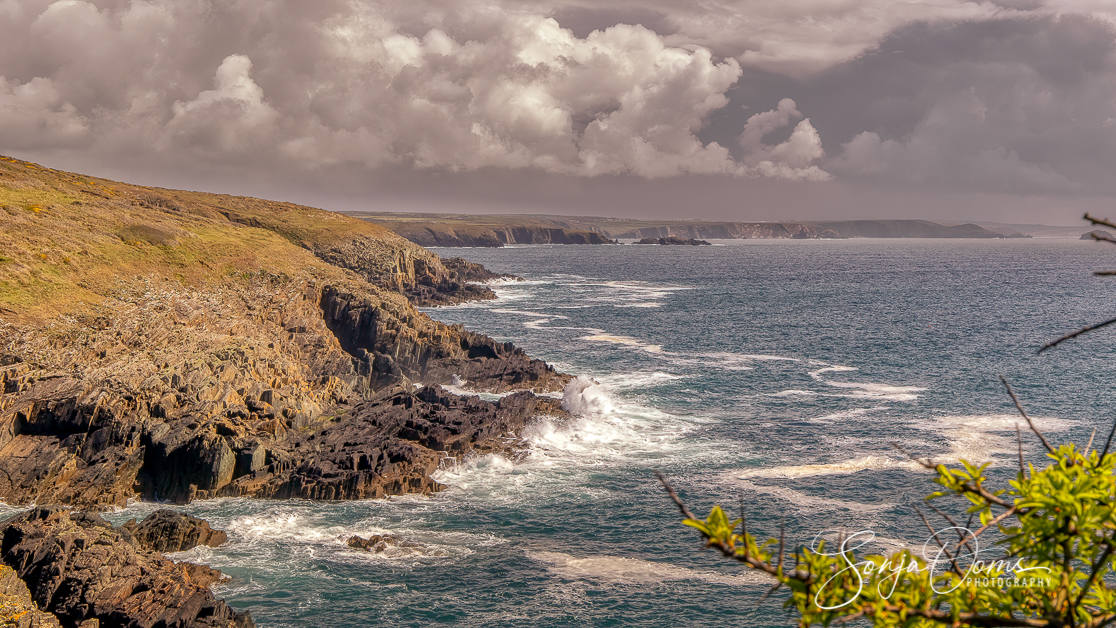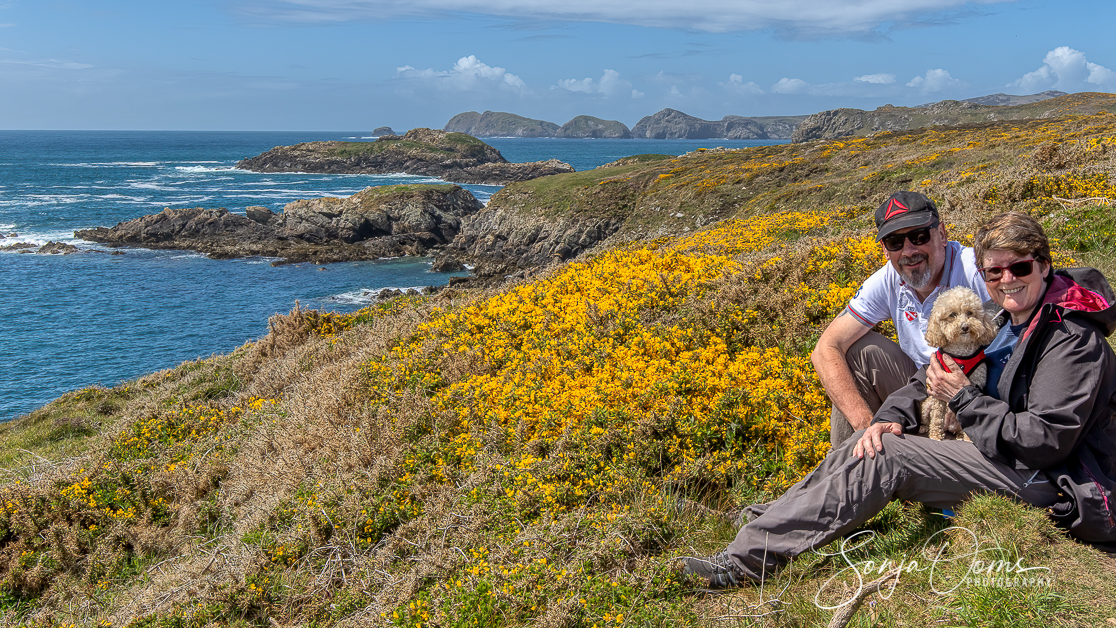(*) Welcome to Wales
Missing the sea really bad, we decided that our next mini-trip would have to be to the coast so we could see and smell the sea again.
So it was off to Pembrokeshire, which immediately made it into our top 3 of favorite places in Wales to visit. Not only is it totally stunning, but there are also a few historic and certainly lots of dramatic spots to see all across Pembrokeshire.
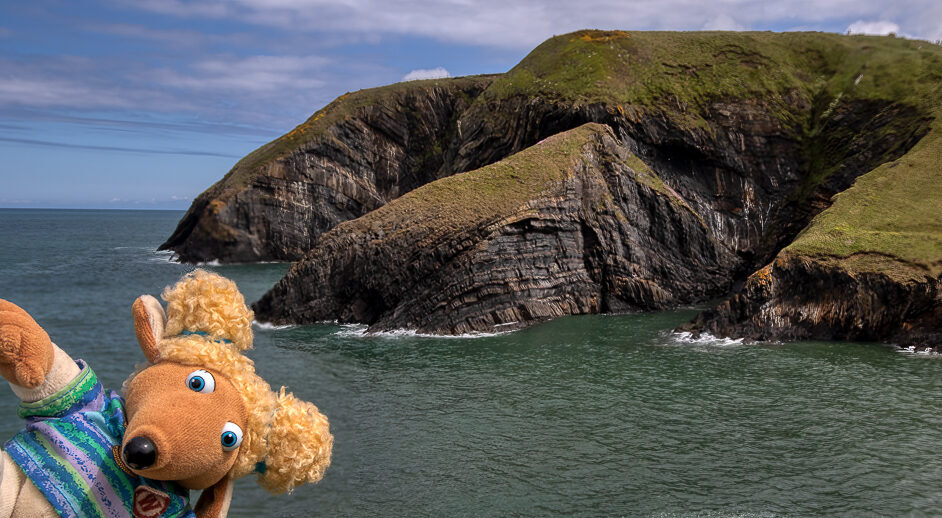
With a pretty big area to cover, it can be a little mind-boggling when it comes to finding all the best places in Pembrokeshire to visit. This is exactly why I wanted to share the few spots we already found worth visiting or even revisiting.

The Pembrokeshire Coast Path was Wales’ first National Trail, covering 186 miles of one of the most incredible coastlines in Britain. The trail officially begins in Amroth in the south and finishes in St Dogmaels in the north. Or is it the other way around ?
The entire path goes up sea cliffs and down to seaside villages and small protected inlets where the local fishermen anchor their boats, making it moderately challenging. In total, there are a staggering 35,000 feet (about 10 Km) of ascent and descent in the trail, which is said to be equivalent to climbing Mount Everest! Which we didn’t do of course, the past year, courtesy of the Chinese flu, we’ve essentially been couch potatoes and on top of that Sonja is still suffering from gout huh tendinitis.

We picked us a delightful cottage in a central spot of the Pembrokeshire park, near Solva, the most westerly point of Wales by the way. Bwthyn Tresais is an 18th century cottage and the owners really made something special of it. If you’re looking for a perfect, quiet spot to spend a relaxing evening after hiking the coast path: this is it! And yes you can squeak with excitement because, although from the 18th century, the cottage has good quality WIFI and Netflix.
No we’re not sponsored hehe, but when its good its good!

Now, it’s likely you’ll be travelling around Pembrokeshire by car which is probably the easiest way to navigate this area of Wales, especially when looking to visit more isolated or countryside spots. I guess you could do some of it on a bike. But beware: narrow roads all over Pembrokeshire. So don’t expect high-quality Dutch-style infrastructure, where cycle lanes are wider than your average UK dual carriageway.
We don’t cycle any more as we’re so out of shape now we’ll probably be overtaken by cyclists with baskets on the front of their bike, or people on folding bikes. There is nothing worse.
Back to stunning spots in West Wales: you’ll be totally spoiled for choice when it comes to exploring, so without any further ado, here we go and I’ll throw in some shots of wildlife and flowers to start.
Pentre Ifan Dolmen
Built around 5,000 years ago, it’s even older than the likes of Stonehenge.
I can only begin to imagine how totally bored that Bronze Age chap with a builder’s cleavage had to be. To one day think: why don’t I lift this 16 ton slab of stone 2.5 m up in the air without the help of Bob the Iron Age Builder’s crane?
Pentre Ifan Dolmen is a collection of seven principal stones. The largest is the huge capstone, 5 m long and 2.4 m wide. It is estimated to weigh 16 tonnes and rests on the tips of three other stones, some 2.5 m off the ground. The Stonehenge of Wales dates back to around 3500 BC. What we see before us today are the bare bones of a burial chamber that would originally have been covered with an earthen mound.
Its outline neatly frames the Preseli Hills towering above, source of the famous Pembrokeshire bluestones that went into the making of Stonehenge as well as Pentre Ifan itself. Geologists have long known that 42 of Stonehenge’s stones, came from the Preseli hills in Pembrokeshire.
There is a whopping 140-mile distance between Craig Rhos-y-felin (Pont Saeson) quarry in the Preseli’s and the current resting site of the Preseli bluestones at Stonehenge.
So was Bertie the Stonehenge Builder, so keen that he made the seemingly impossible task of moving such stones this distance (220km) a reality? There is also a theory that they were brought on a raft, through the Bristol Channel. An alternative theory was that nature drove the stone to Stonehenge, in the path of an Ice Age glacier, although the absence of any other Welsh rock in the region seemed to have ruled out the possibility. Or perhaps it were the Aliens, who we now know for a fact built the pyramids and part of the M25 between Woking and Slough, that also built Stonehenge. The mystery remains and we may never know.
You’ll likely only spend half an hour or so here but it’s well worth visiting if you love ancient history.
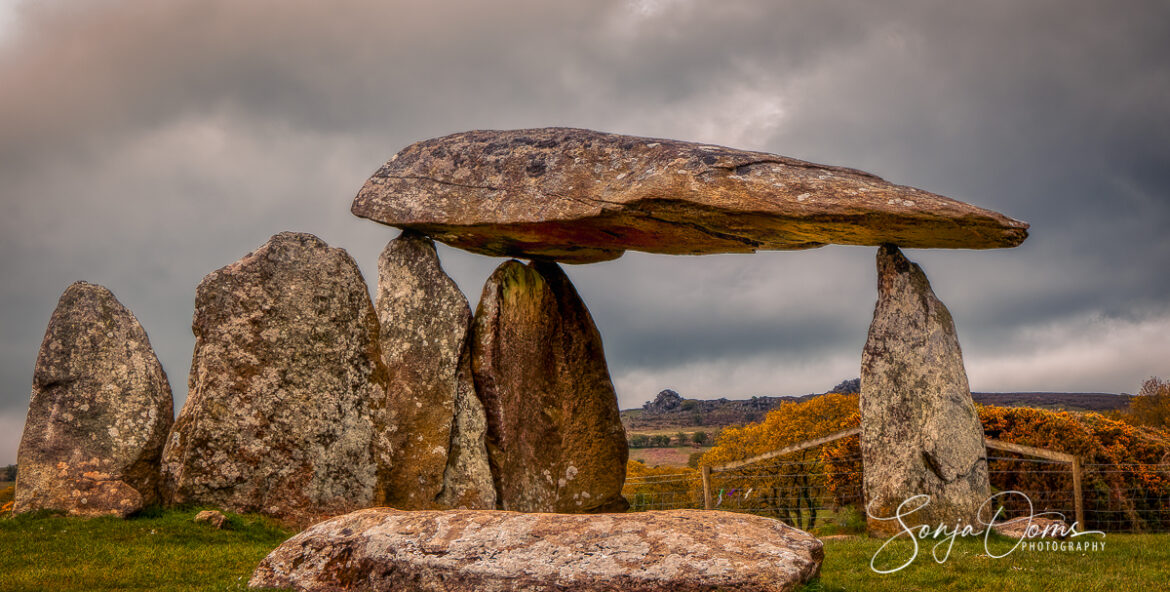
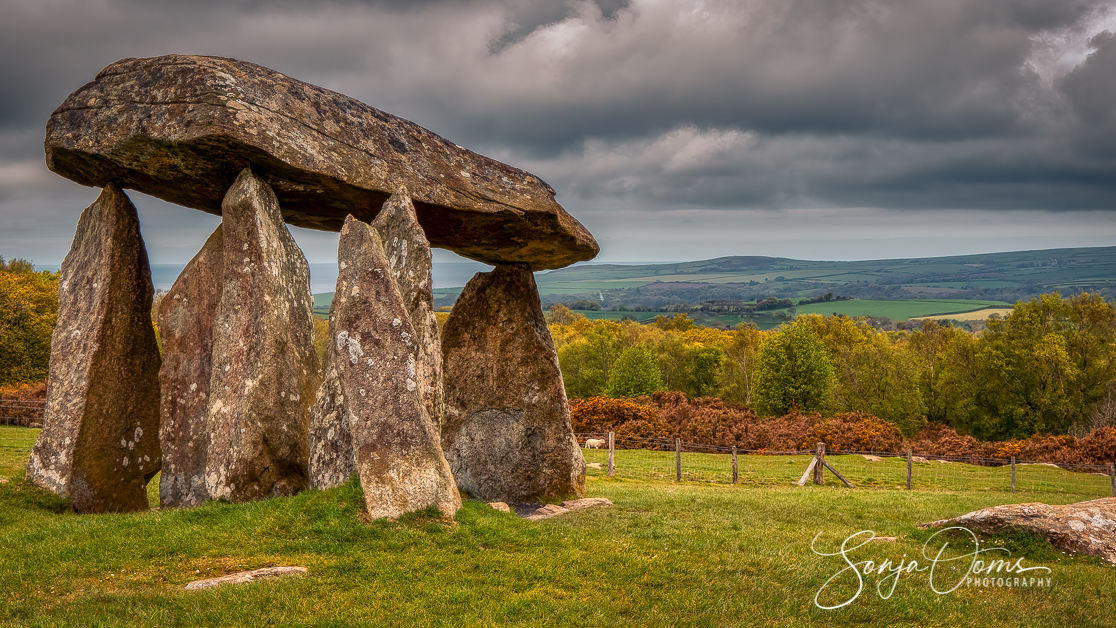
Cwm-yr-Eglwys (English: Valley of the Church) or the Return of the Living Dead.
The church of St. Brynach suffered severe storm damage in 1850 and 1851 when the chancel was destroyed by the sea and the church footings left hanging over an abyss. The graveyard was also severely damaged, the level being reduced by at least three feet, exposing human remains in large quantities.
During the great storm of October 1859 a total of 133 ships were sunk and another 90 badly damaged. The death toll was estimated at around 800. The steam clipper Royal Charter was driven ashore with the loss of over 450 lives. The public impact of the shipwreck may be judged by the fact that Charles Dickens traveled from London to Anglesey to report on the aftermath. The storm also tore away the St. Brynach church roof, damaged the walls and the building was finally abandoned.
If you want some quiet to enjoy the serenity of the place, come early or right after a rain shower like we did. Otherwise it’s usually quite busy and a bit of a tourist trap.
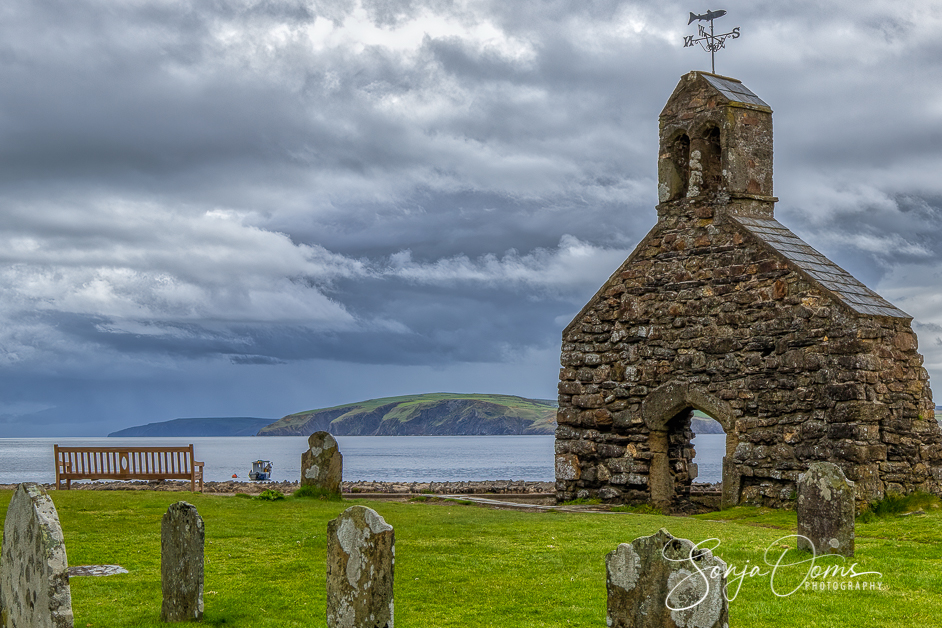
The Blue Lagoon Abereiddy
Close to Abereiddy beach along the coastal footpath to Porthgain you can find the ‘Blue Lagoon’. Essentially the ruins of a small slate quarry, now flooded by the sea.
Slate was exported across Abereiddy beach, but later through a tramway to the harbor at Porthgain a couple of miles to the North. Managed by the National Trust, ruins of a small group of slate houses known as The Street remain near the beach. These were houses built for the quarry workers.
The Blue Lagoon is 25m deep and despite the name, the water is always a distinct greenish hue, owing to the mineral content within the quarry.


St David’s
Being one of the smallest cities in all of the UK, St David’s is a perfect place to stop for a day trip whilst exploring Pembrokeshire.
Truth be told, the city is tiny but it packs a punch when it comes to the incredible spots to see.
You see, right within St David’s itself is the cathedral, which has stood here for centuries and has been considered a holy spot since William the Conqueror visited almost 1,000 years ago.
It’s totally gorgeous and pretty imposing too. In fact, it towers over the rest of St David’s and is easily the tallest building in the city.
You also can’t miss the Bishops Palace ruins right next door. Even in ruins, the palace – unequaled anywhere else in Wales – still conveys the affluence and power of the medieval church. No expense was spared in creating a grand residence fit for a major figure of both Church and State. But increasingly, the bishops stayed less at St Davids and by the middle of the 16th century, the chief episcopal residence was at Abergwili, Carmarthen. Rumors have it that the first Protestant bishop of St Davids stripped the palace’s lead roof to pay for his daughter’s dowry. And decline set in. In 1616, Bishop Milbourne applied for a licence to demolish some of the buildings. Although the plan was not carried out, the buildings must have been in poor condition by then. By 1678, when St Davids was ransacked by Parliamentary soldiers, the palace was beyond repair.
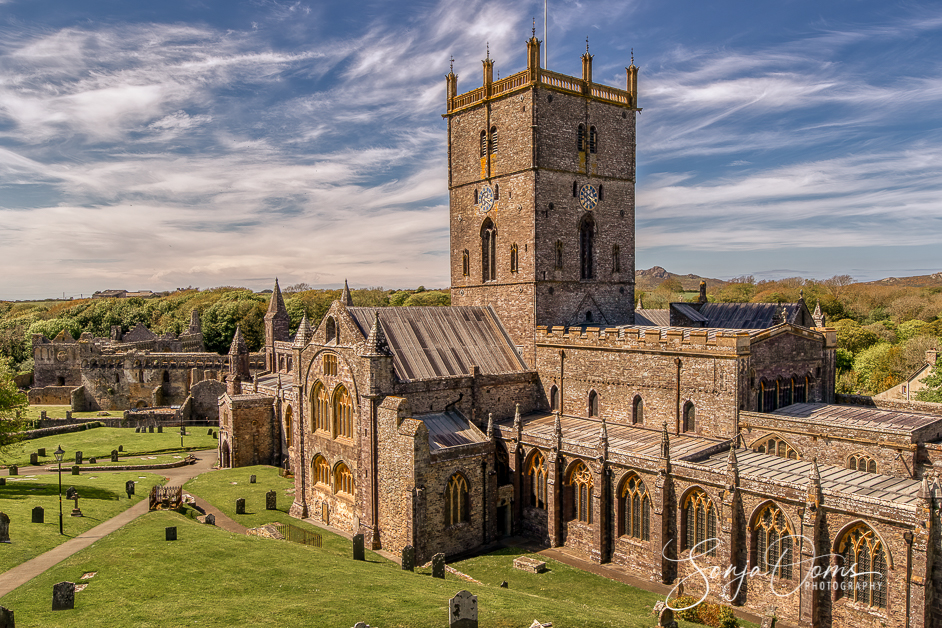

Porth Clais.
A very pretty small harbor, built in the 12th century but probably there since long before. The old harbor wall is believed to have been constructed by the Romans. It’s the starting point of many a spectacular walk along the coast.
After a fantastic cliff walk around Porth Clais we stumbled on this other Pembrokeshire gem: homemade ice-cream from the friendly owners of the small kiosk near the harbor. As Porth Clais not only has a National Trust parking but is also home to the Porth Clais kiosk. Fresh coffee and delicious ice-cream!
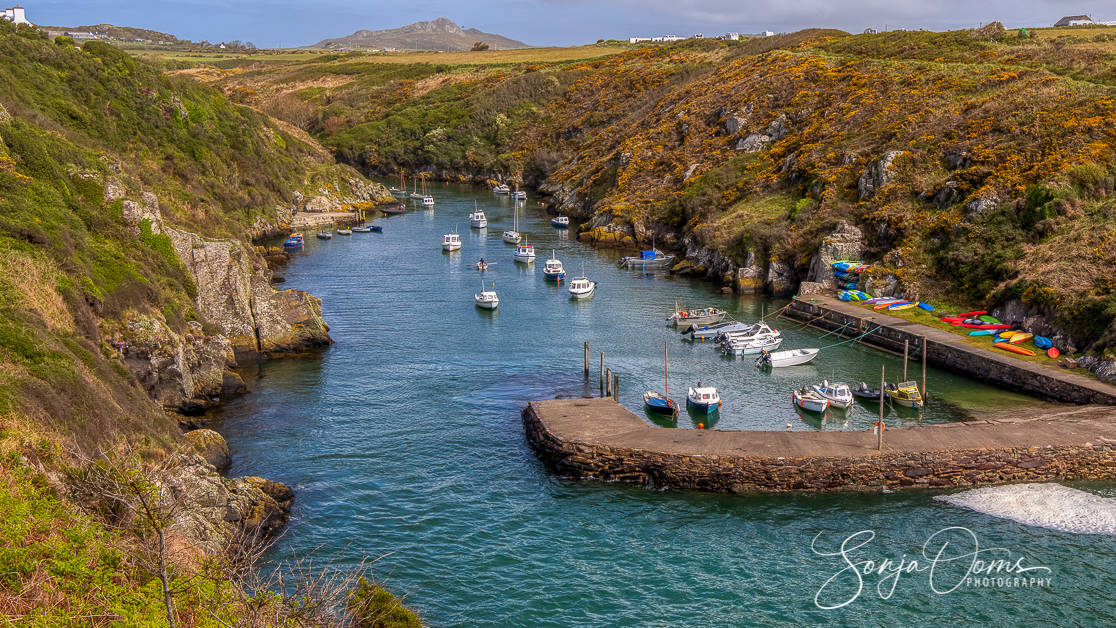
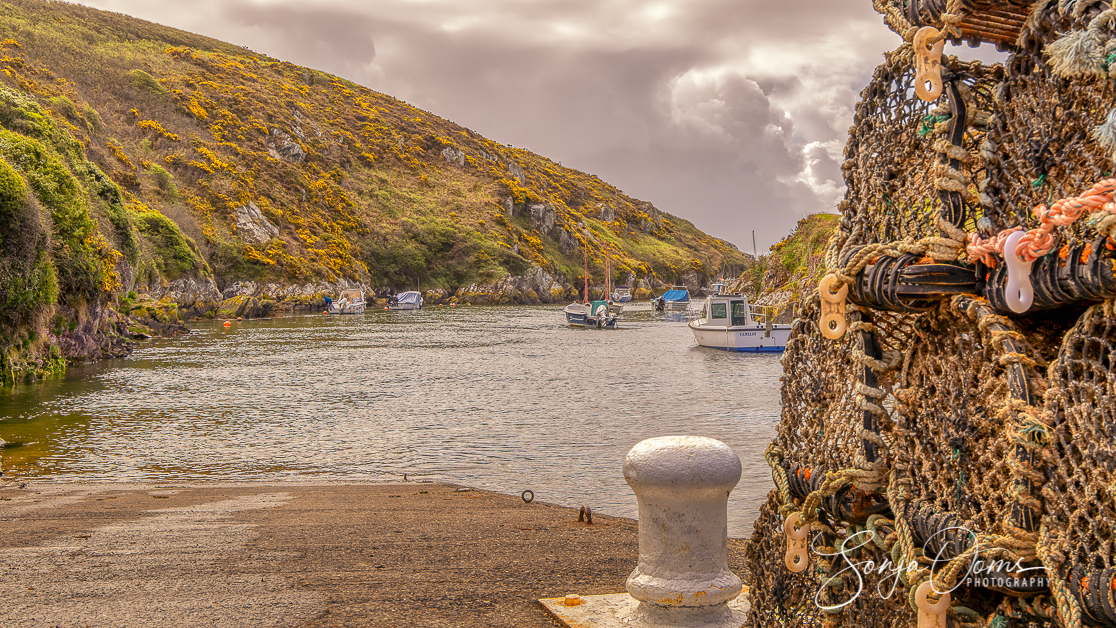

Well that’s it again, I hope you enjoyed looking at the photo’s as much as we enjoyed shooting them.
So many breathtaking views and beautiful places. And not enough time to explore them all. We have to go back to cross the military tank firing range and see Green Bridge, hike up to Saint Govan’s Chapel, walk around in Tenby and Pembroke, see Carew Castle …
Anyway, watch this space; next stop the Lake District with our bhessy for life: The Woman from Suffolk and Derek 🙂
